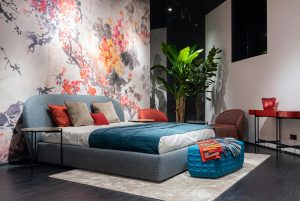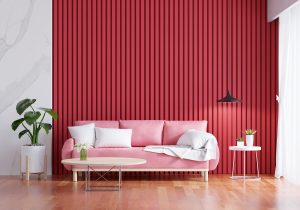- Rustic and contemporary design balance is achieved through contrast and a mix of textures and materials.
- Cohesion is key, using motifs or colors, like a specific wood species, to unify the space.
- Rustic charm appeals to its storytelling and connection to nature, resonating in today’s simplicity-driven aesthetics.
- Creativity and exploration are encouraged when finding one’s unique rustic contemporary style without a one-size-fits-all solution.
- The fusion of rustic and contemporary elements offers endless possibilities for personalizing living spaces.
The marriage of old-world charm with contemporary finesse has become a hallmark of sophisticated interior spaces. For those who appreciate the timeless allure of weathered textures and the coziness of country aesthetics but still desire the sleek lines and open spaces of the modern home, a fusion known as “rustic contemporary” has emerged as a trend that promises warmth and authenticity without sacrificing style.
With an emphasis on bringing the outdoors in and celebrating the inherent allure of natural imperfections, rustic contemporary design offers a respite from the digital age’s cold precision and artificial environments.
In this detailed exploration, we’ll unpack the defining characteristics of “rustic charm,” offer insights into seamlessly melding these elements with modern design, and provide tips for creating a harmonious space that cherishes the past while moving confidently into the future.
The Essence of Rustic Charm in Modern Spaces
Defining Rustic Charm

Rustic charm isn’t just about a specific color palette or using particular materials; it’s about evoking a sense of history and the countryside within your home. It speaks to an aesthetic that treasures the beauty of imperfections, such as distressed wood or the asymmetry of handcrafted furniture. By incorporating these elements, your space can exude a down-to-earth, inviting, and endearing quality.
Key Elements of Rustic Design
One must turn to a selection of integral design elements to capture rustic charm. Natural materials, from wood to stone and raw metals, take center stage. The key is to look for items that tell a story, like reclaimed barn wood or forged iron. Beyond materials, the tactile experience is essential; rough-hewn textures, such as handmade pottery or woven baskets, add depth to the design.
The Role of Color and Light
Color and light are instrumental in setting the mood for a rustic contemporary space. Earthy tones form the foundation, with muted shades of green, brown, and ivory creating a soothing backdrop. Natural light is a friend to this style, highlighting the textures and richness of materials. Soft, warm artificial lighting can complement this during the evening, imparting a golden glow accentuating the rustic ambiance.
Incorporating Rustic Elements into Contemporary Design

Furniture and Decor
When selecting furniture and decor, the goal is to find pieces that bridge the two styles—vintage elements that remain functional within a modern space. For example, pairing an antique spindle-back chair with a glass and steel dining table speaks to the past without looking out of place. With its classical, rustic connotations, a high-quality wood mantel can be a stunning focal point in a contemporary living room, offering a touch of nostalgia amid clean lines and minimalist decor.
Textiles and Accessories
Rustic textiles are crucial in adding warmth and comfort. Think cozy throws in natural fibers like wool and cotton or layered area rugs with earthy patterns. Accessories should mirror the sense of collected treasures, like framed botanical prints or a curated display of vintage items. Each piece should feel as though it was thoughtfully selected to contribute to the greater narrative of the space.
Creating Balance and Cohesion
The right balance is key to integrating rustic elements within a contemporary framework. Contrast can be a powerful tool, with a mix of textures and materials ensuring that no single style dominates. Cohesion is established through a coherent design language that repeats certain motifs or colors throughout the space. For instance, using a particular wood species can unify diverse pieces, from the flooring to the furniture to the ceiling beams.
Conclusion
The appeal of rustic charm in contemporary interior design lies in its ability to tell a story and provide a connection to the natural world. In a time when simplicity and authenticity are sought, this aesthetic offers a compelling solution. By thoughtfully marrying the past with the present, we can create living spaces that are not only beautiful but also deeply personal.
For those venturing into this style, the message is one of creativity and exploration. There is no one-size-fits-all approach; rather, the magic of rustic contemporary design truly comes alive in the mix of textures, the play of light, and the choice of individual pieces.
In closing, consider the beauty and warmth that can arise from such a fusion. Whether the comforting patina of a wooden floor or the functionality of a sleek metal fixture, the interplay between the rustic and the contemporary offers endless possibilities—and the chance to craft a haven that uniquely reflects you.





